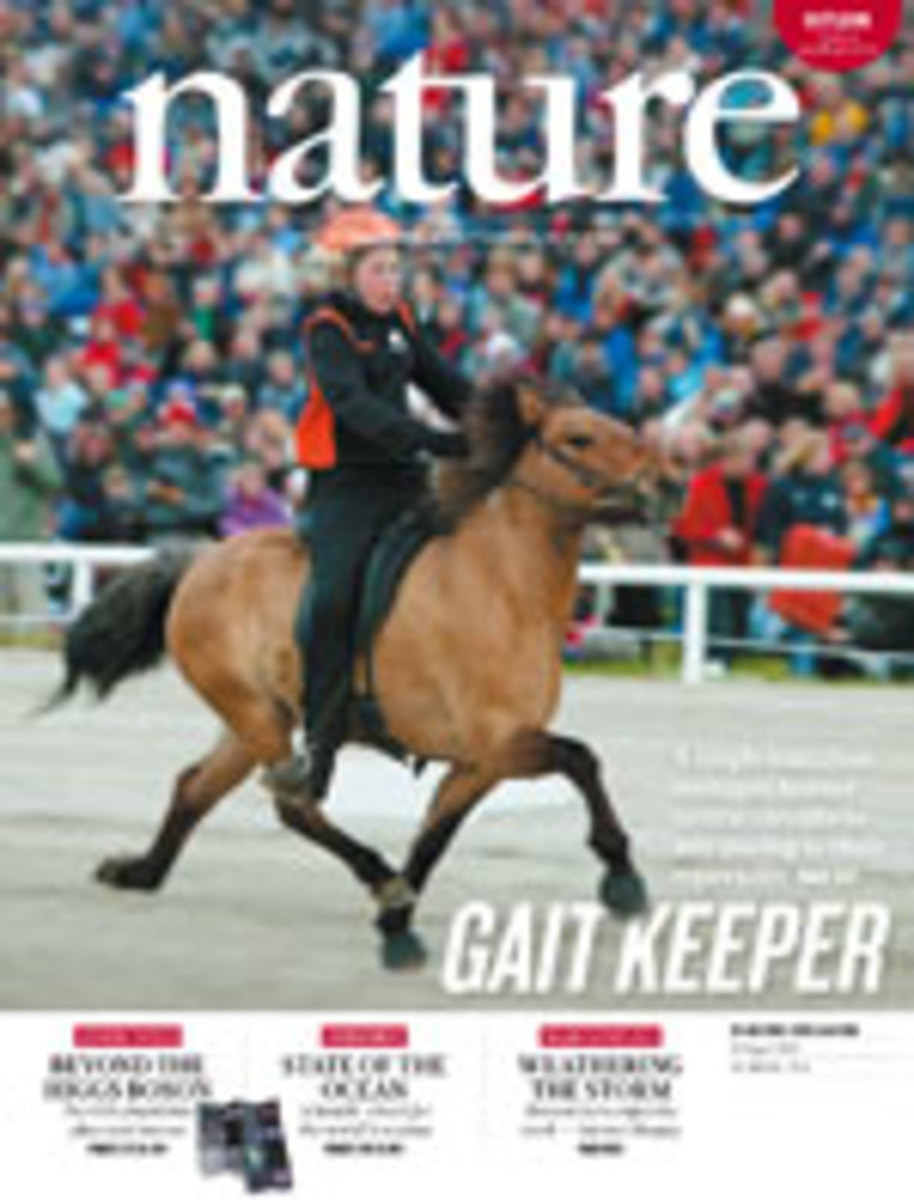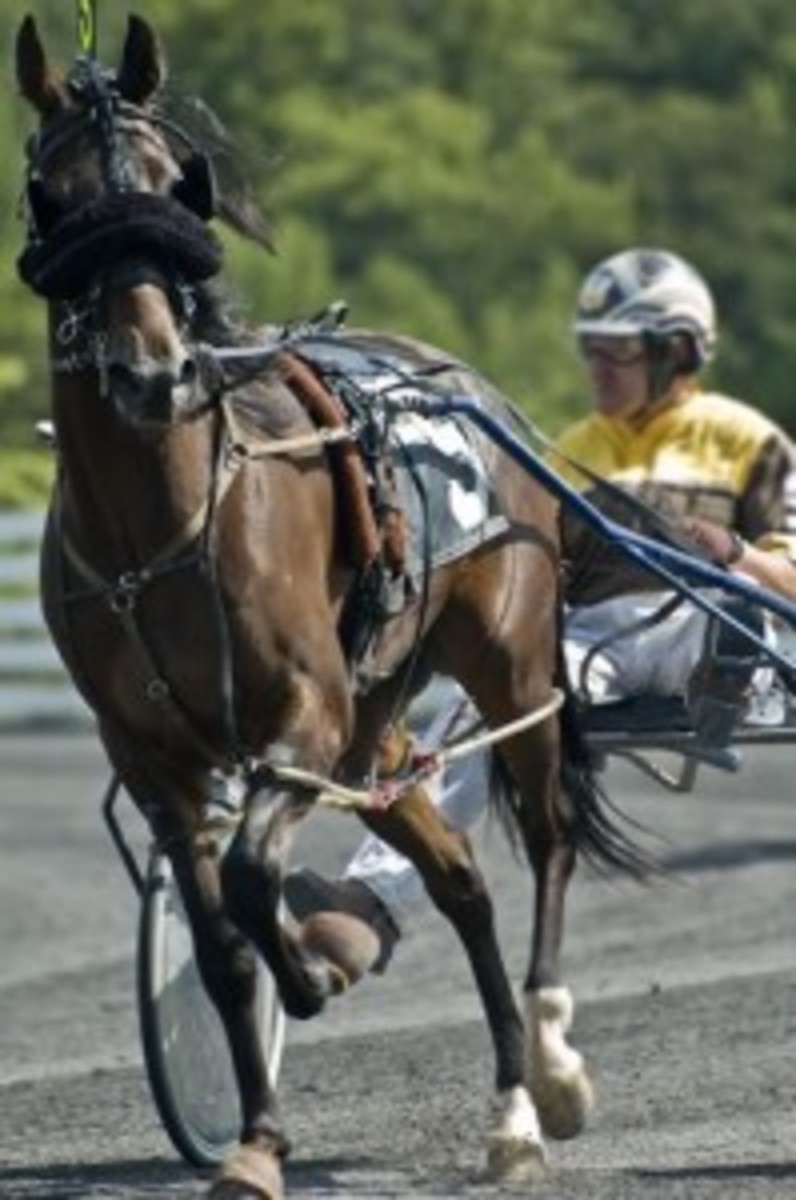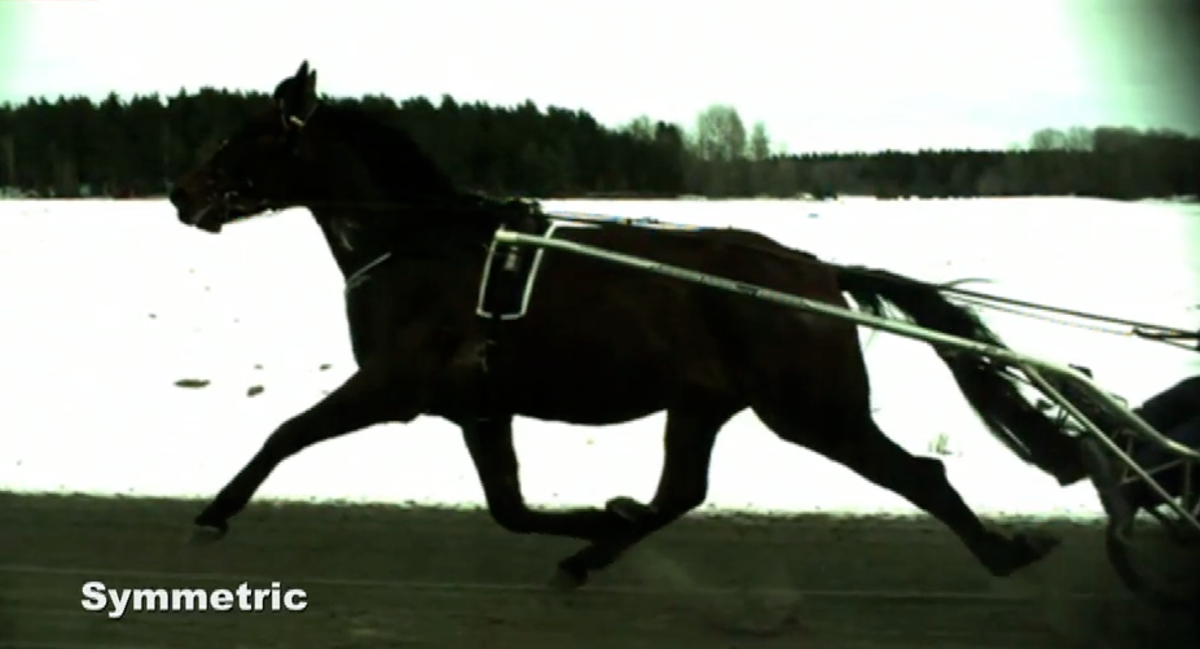[VIDEOSINGLE type=”youtube” keyid=”msLtoRBspLA”, width=”560″, height=”344″]
This video demonstrates the fast pace (as opposed to trot) of an Icelandic horse, filmed in a workshop of the International Conference on Equine Locomotion this summer in Sweden. Both the trot and pace are two-beat gaits but in the trot, a horse uses diagonal pairs of legs in unison; in the pace it uses pairs of legs on the same side.(Video from The Hoof Blog and Qualisys)
Summary: What makes a horse pace instead of trot? Part of it is breeding, but some horses are able to both trot and pace. Researchers knew that if they could find a specific mutation in a gene in horses that affects the ability of horses to use alternate gaits they would find their research to have great value to the study and prediction of racing performance for harness-racing horses. And find it they did. In domestic horses, the mutation of this single gene has had a major impact on their diversification, as the altered gait characteristics of a number of breeds apparently require this mutation. The Swedish study included American researchers from Texas A&M University, the University of California at San Francisco and the University of Minnesota. The study was published today in the journal Nature.
Our ability to walk and run is dependent on a complex coordination of muscle contractions carried out by neuronal circuits in our spinal cord. But how does this work at the level of nerve cells and molecules? Researchers at Uppsala University, the Swedish University of Agricultural Sciences, and their international collaborators took advantage of the variability in the pattern of locomotion in horses as a means to unlock the influence of genetic code on spinal function.

The three naturally occurring gaits in horses are, in order of increasing speed, walk, trot and canter/gallop. Some horses are able to perform ambling gaits and/or pace. For instance, Icelandic Horses can t?lt (an ambling gait) and perform the flying pace.
The researchers decided to investigate the genetic basis explaining why some Icelandic Horses can pace but others cannot.
Gus Cothran, a professor in the Animal Genetic Lab of the College of Veterinary Medicine & Biomedical Sciences at Texas A&M University, was part of a team of researchers that examined motion in horses and also mice.

Cothran and the team used a process called “whole genome SNP analysis” to study the genes of 70 Icelandic horses that had either four gaits or five, with the pace being the fifth gait. This pointed to a gene identified as DMRT3 that is critical for horse motion and limb movement.
They found that DMRT3 has a major impact on the movement of a horse, especially its gait.
” ?Gaitedness’ is a trait that naturally occurs in all horses, but many breeds have been developed for a specific speed or gait,” Cothran explains.

The researchers demonstrated that a single base change in a single gene called DMRT3 resulted in the production of a truncated form of the DMRT3 protein. They also showed that this was the mutation associated with pacing in horses.
The researchers developed a diagnostic test for the mutation and discovered that it is widespread among horses that show alternate gaits, like the Tennessee Walking horse here in the USA and the Paso Fino from South America. Moreover, to their surprise, they found that the mutation is very common in horses bred for harness racing.

The DMRT3-mutation has had a major impact on the evolution of the domestic horse and most likely first appeared thousands of years ago. Presumably, humans discovered that some horses had a pattern of locomotion that made them particularly useful for certain purposes, such as a smoother ride provided by horses performing an ambling gait.
Cothran and the team also examined the same gene and its effect on mice.
“We specifically looked at the gene and its effect on the movement of mice, such as swimming ability,” he adds. “The motion ability of mice seemed suppressed and was similar, though not identical to that of gaited horses.”
Cothran says with more research, the findings could have critical importance to horse breeding and horse racing. This discovery has particular value in selective breeding for harness racing.
“We need to examine the DMRT3 on certain breeds and see if it can directly affect the speed and movement of horses,” he adds.
“Naturally, it’s something that horse breeders and anyone involved with horse racing would be interested in and would want to know about. These findings could have a major impact on future horse breeding.
“We think it’s an exciting step in looking at motion, speed and limb movement, and it’s possible it could have implications in other species, too.”
Other American researchers involved in the study were Jessica L. Petersen, Molly E. McCue and James R. Mickelson of the University of Minnesota College of Veterinary Medicine,? and Nadav Ahituv of the University of California San Francisco
The project was funded by grants from the Swedish Brain Foundation and computer resources were supplied by the Royal Swedish Academy of Sciences Research.

To learn more:? “Mutations in DMRT3 affect locomotion in horses and spinal circuit function in mice” by Leif Andersson et al in the journal Nature, Volume 488 Number 7413, pages 557-690, 30 August 2012.
Information for this article was compiled from multiple sources including Anneli Waara of Upsaala University and Texas A & M University, with help from Qualisys.








